Learning to Swim As An Adult
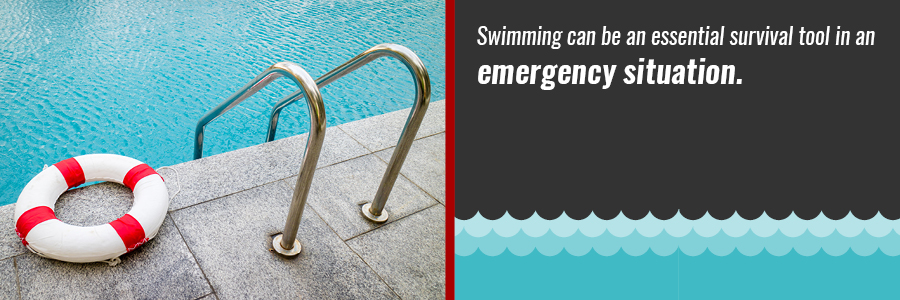
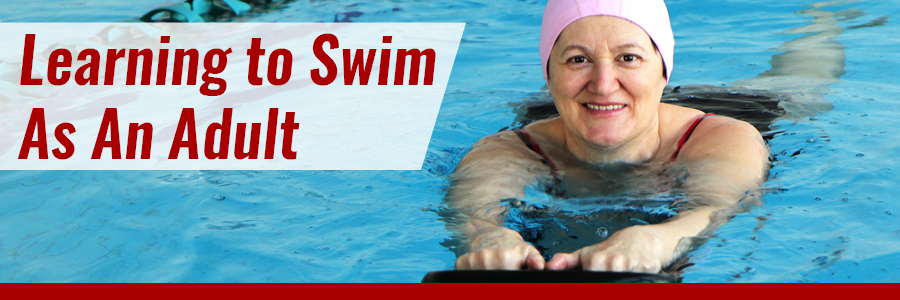
Swimming is the fourth most popular recreational activity in the United States. Adults, teens and children love to cool off and swim in indoor and outdoor pools, as well as natural bodies of water. Although swimming is so popular, only 56 percent of people have the five basic swimming skills. These five skills, determined by the Red Cross, include:
- Stepping or jumping into water over your head
- Swimming to the surface and treading water for one minute
- Turn around in a full circle in the water and locate an exit
- Swim at least 25 yards to the exit
- Safely exit the water — with or without a ladder if you are in a pool
If you are not confident you could do all of these things or any of these things in the water, you aren't alone. Learning to swim as an adult can seem like a daunting task, but it doesn't have to be. Dip your toes in the water by checking out these great tips on learning to swim as an adult, including why it is a great skill to learn at any age.
Why It Is Never Too Late to Learn How to Swim
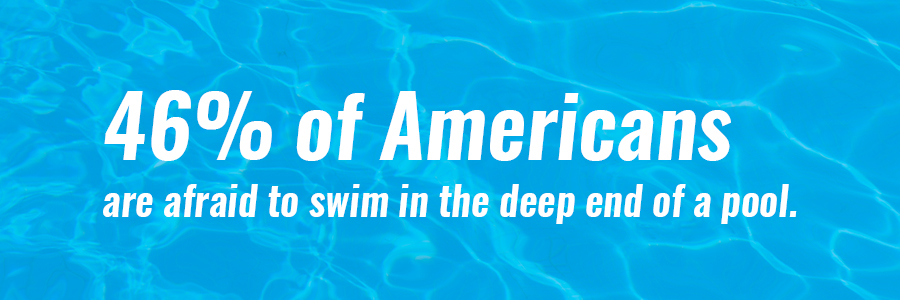
"It's too late."
That's one of the most common excuses adults give for not learning how to swim — among other things. Many people are held back by reluctance stemming from a fear of looking foolish, a fear of water or pure disbelief that they will be able to master the skill. However, you can overcome all three of those obstacles:
- Fear of Judgment: It might have been easier to learn how to swim during your childhood, but it's far from impossible to learn how to swim as an adult. Most of us deal with some level of insecurity when we decide to learn something new. It can be tough seeing kids and teens swim circles around you, but don't worry. There are plenty of adults who do not know how to swim. Taking the plunge and deciding to tackle a new skill takes courage. We would never learn anything new if we let doubt get the better of us. Find an instructor you're comfortable with, and they'll help you ease into the world of swimming with compassion and guidance.
- Fear of the Water: Nearly half of Americans — 46 percent — are afraid to swim in the deep end of a pool. So, if you find yourself hesitant to start swimming because of a fear of water, it may help to know this a common issue. Like any phobia, you can overcome your fear of water. Start by getting comfortable with the idea of getting in the water. Tell your instructor about your fears. Practice different strokes and breathing techniques outside of the water. Pick a pool — skip the lake or ocean until you feel comfortable in the controlled environment of a pool — where you feel comfortable. When you feel ready to get in the water, try walking around in the shallow end. Get used to the feeling of moving through the water with both feet firmly planted on the ground. From there, you can slowly introduce more movement and swimming techniques. Go at your own pace, and accept it may take time to move past your fear. With time and practice, it will happen.
- Uncertainty That You Will Be Able to Learn: You might not be afraid you'll look silly or even be particularly afraid of the water. Instead, you may think trying to learn will be a wasted effort because you won't be able to. But, that simply isn't true. You do not have to reach the graceful, Olympic-medal-winning levels of Katie Ledecky or Michael Phelps. Learning to swim means mastering the basics of staying afloat and moving through the water safely. What your body can do might surprise you — it just takes some motivation and dedication. Don't get discouraged if you aren't zipping up and down the lanes after one lesson. Stick with it, and you'll find that you're making steady progress. Always celebrate the small milestones, like the first time you tread water or the first time you swim on a lap on your own.
The Benefits of Swimming

Now you know you really can still learn to swim, you may be wondering why you should take the time to get in the water as an adult. Swimming has a ton of benefits that can help motivate you to keep learning, including that it:
- Can Save Lives: Plenty of people who do not know how to swim still enjoy spending time out on the water, whether that's on the beach or out on a boat. It might seem unlikely, but swimming can be an essential survival tool in an emergency situation. Plus, knowing how to swim can come in handy when you take your kids or grandkids swimming. Lifeguards are trained, but sometimes you might just be closer to one of your little ones who's struggling to stay afloat. Thinking of swimming as an essential life skill can help motivate you to take the time to learn.
- Is a Low-Impact Exercise: As we get older, our bodies — and particularly our joints — are more prone to pain and injury. Maybe you participate in other sports that put a good amount of stress on your joints, or perhaps you haven't tried any regular exercise and are worried about how swimming will affect your body. Good news: the water does a lot of the work for you. Buoyancy helps keep your body afloat, which means a lot of the stress you would feel on land is eased in the water. Your whole body gets a great workout, but you won't feel it in your knees the next day like you would after pounding the pavement on a run. So, you can swim with little worry of sustaining a sports-related injury.
- Builds Muscle Mass, Endurance and Flexibility: Swimming works nearly all of your muscles, too. When you start regularly swimming, you'll notice changes in the muscles of your arms, legs and core. Working those muscles also positively affects your posture and balance when you're out of the pool. As you spend more time swimming, you'll also find additional benefits, like improved endurance and flexibility. These types of physical changes are significant for us, no matter our age. Plus, seeing and feeling those physical changes in ourselves can push us to keep up the good work.
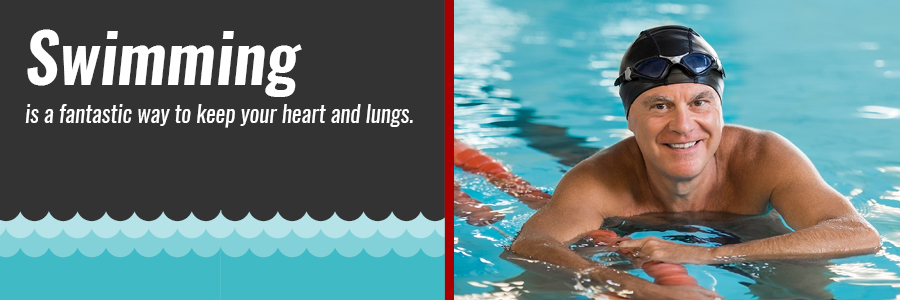
- Is a Great Cardiovascular Workout: The older it gets, the more we seem to hear about heart health. We have to watch what we eat, track our cholesterol levels and, of course, add regular exercise to our routine. Unfortunately, many of us are not big fans of cardio workouts. Swap out traditional cardio routines, like running on the treadmill, for swimming. It's a fantastic way to keep your heart and lungs healthy. Plus, regularly swimming has been shown to reduce your cholesterol levels and lower your blood pressure. Boast about those reduced numbers next time you head to the doctor for a checkup, and remember managing those aspects of your health are great for your entire body and its overall health.
- Is a Stress-Management Technique: Stress is a fact of life. We all have busy lives full of work and family obligations. While we can't change many of the stressors in our lives, we can change how we manage the resultant stress. Exercise, like swimming, is an effective way of shedding some of that worry and giving our bodies and minds a break. Swimming releases endorphins, which give us a natural mood-boost. Plus, being submerged in water reduces the amount of sensory information your body takes in every day. No more honking horns in traffic, and no more conference calls. Of course, you'll hear some splashing, but you can ignore that. Focus on your breathing and the movement of your body as you clear your mind of all the clutter that inevitably gathers throughout the day. If the idea of swimming isn't all that appealing, think of it as a way a relaxation tool. The feeling of calm can be worth it.
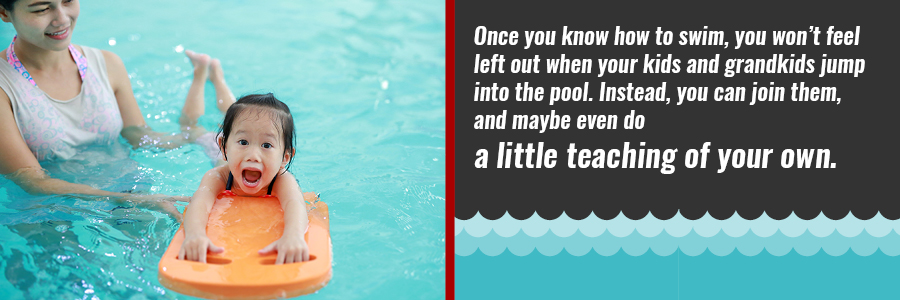
- Can Be a Fun Family Activity: As we grow older, trying new things helps break up our routines and keep our relationships fresh. If your spouse or partner knows how to swim, get them involved by asking them to do a little teaching outside of your regular lessons. If they don't know how to swim either, try to get them to take lessons with you. Learning something new together makes a great couples' activity. Once you know how to swim, you won't feel left out when your kids and grandkids jump into the pool. Instead, you can join them, and maybe even do a little teaching of your own.
Reasons to Learn to Swim as an Adult
So, you know there are plenty of benefits of swimming, but you might still need a little more motivation to jump into the pool. Here are a few more reasons adults should learn how to swim:
- For Safety: You never know when you'll be near or on a body of water, particularly during the summer months. If you're invited to the beach, to the pool or out on a boat, knowing how to swim is an essential skill for you and the people around you. Think of swimming as a safety exercise.
- For Exercise: There are plenty of ways to exercise as an adult. You can run, lift weights, hike and bike. All of these options are great, so why add swimming to the mix? Remember, swimming works out your entire body without putting a lot of stress on it. Running, lifting, hiking and biking can be tough on your body as you get older. Give your joints a rest in the water while still getting all the muscular and cardiovascular benefits of working out.
- To Discover a New Hobby: It's easy to fall into a routine as an adult. You go to work, go home, fall asleep and repeat. That's a big reason time seems to move so much faster as we get older. Trying and mastering something new injects some excitement into our lives. We still need to challenge ourselves as adults, and the sense of satisfaction when we accomplish something is a great feeling. Swimming can be that something new, and eventually it can become that activity you look forward to every week.
- To Meet New People: You can sign up for one-on-one swim lessons, or you can join a group class. Going to class every week can be a great way to meet new people and expand your social circle. Plus, you can help one another learn and celebrate victories together.
Seven Tips to Learn to Swim as an Adult
Learning a new skill like swimming is a lengthy process, but it doesn't have to be stressful or complicated. Here are seven helpful tips to help you learn to swim.
1. Start Out Slow
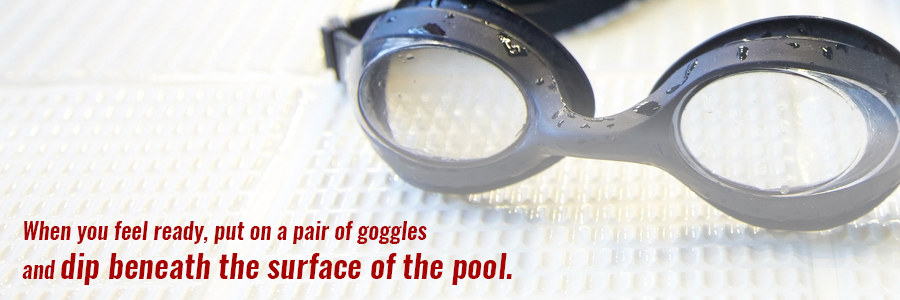
The first adult swimming for beginners tip is to take all the time you need to get comfortable first. Find a pool and instructor you feel are the right fit. Talk to your instructor about any concerns you might have. From there, you can ease yourself into the water.
Start in the shallow end, or spend time sitting on the edge of the pool getting used to just the feeling of the water on your legs. Try walking up and down your lane in water that goes no higher than your chest. This will help you get a sense of the type of resistance your body will experience will moving through the water.
When you feel ready, put on a pair of goggles and dip beneath the surface of the pool. Eventually, you can start to add some of the fundamental movements that make up swimming.
2. Practice Floating and Kicking
Floating and kicking are two main components of swimming. You can efficiently practice both of these while holding onto the edge of the pool. Face the side of the pool and place both hands on the edge. Let your legs float up behind you, or ask your instructor to hold your hips gently as you extend your legs. Once your arms are fully extended, and you're floating on your stomach, you can begin to kick gently. This movement will be half of what propels you through the water as you swim.
Wear your goggles while you do this so you can practice getting used to putting your face in the water. Practice this until you feel comfortable with both floating and kicking.
3. Try Different Strokes
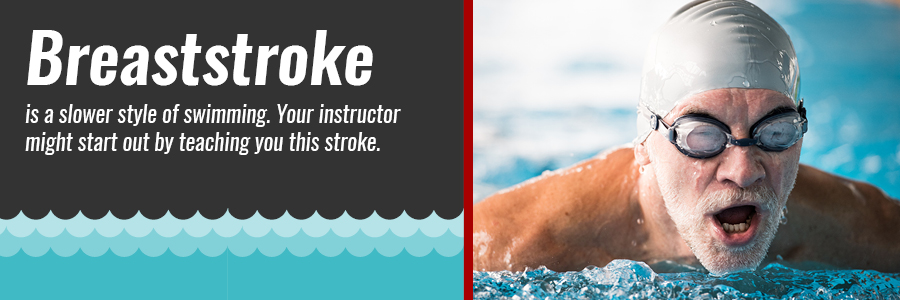
Different people prefer different kinds of swim strokes — even experienced swimmers have a preference. A few popular choices include:
- Freestyle: This is the most basic stroke. When swimming freestyle, you will kick your legs just like you did when you were holding onto the edge of the pool, and your arms will pull you forward with an alternating movement. Turn your head to the side to breath.
- Breaststroke: Breaststroke is a slower style of swimming. Your instructor might start out by teaching you this stroke. Your legs will frog kick, also known as a whip kick, behind you. You can also practice this on the wall before you add the circular arm movement. Be sure to learn the arm and leg movements before you add dipping your head beneath the water.
- Backstroke: Backstroke is precisely what it sounds like. You float on your back, kick your legs and use alternating movements of your arms. Backstroke can be a great exercise if you're experiencing back pain. The butterfly is an advanced stoke you've probably seen Olympic swimmers do. This one will likely not be included in a beginner's swimming class.
4. Use Equipment
Being in the pool without anything to hold on to can be a little scary. That's why using equipment can be a big help when you're first learning how to swim. You can use a kickboard to become accustomed to moving through the water, holding it with your arms while you use your legs to kick and move through the water. This is a great way to learn the leg movements for freestyle and breaststroke.
You can also use pool noodles to help you keep afloat as you learn. Rest your hips or stomach on the noodle as you combine the arm and leg movements of the stroke you are learning. Feel free to use whatever equipment you prefer until you feel ready to try swimming without it.
5. Learn Pool Etiquette
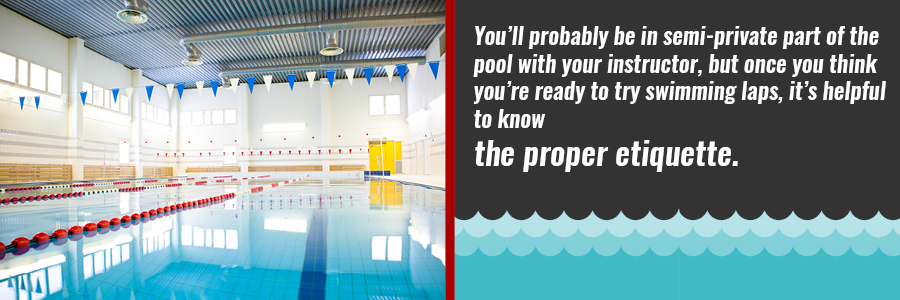
Pool etiquette is not too much of a concern when you're taking lessons. You'll probably be in semi-private part of the pool with your instructor, but once you think you're ready to try swimming laps, it's helpful to know the proper etiquette.
A lot of pool etiquette is common sense, like:
- Do not splash other swimmers
- Make sure you're clean before you enter the pool
- Do not swim with band-aids or open wounds on your body
- Wear appropriate swimwear
However, what you might not know about are the unspoken rules that oversee the pool lanes. Many pools have lane lines, but some do not. If there are lines, the general rule is to pick a lane and stay in it. If there are no lines, watch the other swimmers and select one of the lanes they have created. Try to pick a lane with swimmers that are at a similar skill level. Pass other swimmers politely, and allow others to pass you. One rude swimmer can ruin the pool experience for a lot of people — don't let that be you.
6. Be Patient and Stay Committed
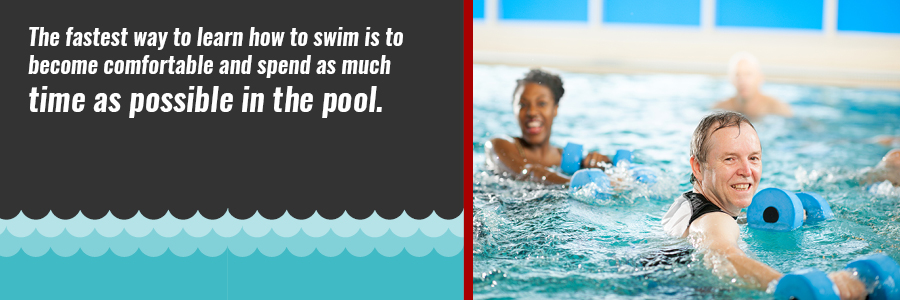
It can be easy to become frustrated if you don't feel you're making immediate progress. Try to be patient. Learning something completely new takes time, and it takes regular practice. When you sign up for lessons, make sure you show up. If you can, you should also practice what you've learned between lessons. The fastest way to learn how to swim is to become comfortable and spend as much time as possible in the pool.
7. Buy the Right Suit
Swimming is a sport, so you'll want to pick a formfitting suit. If you're a woman, leave the cute bikini for the beach and opt for a one-piece suit. If you're a man, ditch the swim trunks for more form-fitting compression shorts, as a close-fitting suit will allow you to move through the water more efficiently. The last thing you want on your first day of swim class is for the ties of your bikini to come undone, or the fabric of swim trunks to slow you down. Even though a plain suit is a better option for swimming as a form of exercise, you can still find fun patterns and colors that you like, too.
Find an Attractive, High-Quality Suit and Gear From The Lifeguard Store Today
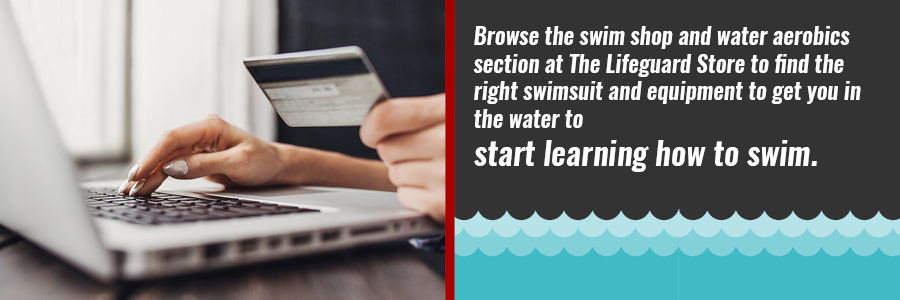
Being confident in your suit, gear and equipment is a big part of feeling ready to learn how to swim. Browse the swim shop and water aerobics section at The Lifeguard Store to find the right swimsuit and equipment to get you in the water to start learning how to swim.
Learn More Swimming Tips:
- How to Swim Like a Triathlete and Not Just a Swimmer
- Tips for Teaching Swim Lessons as a Lifeguard
- Introducing Children to Swimming
- 5 Tips for Training Recovery
- Why You Should be Doing More Kicking
- Why Your Child Should Learn How to Swim
- Distance Swimmers Struggles
- Swimming and Arthritis
- Choosing the Right Fin



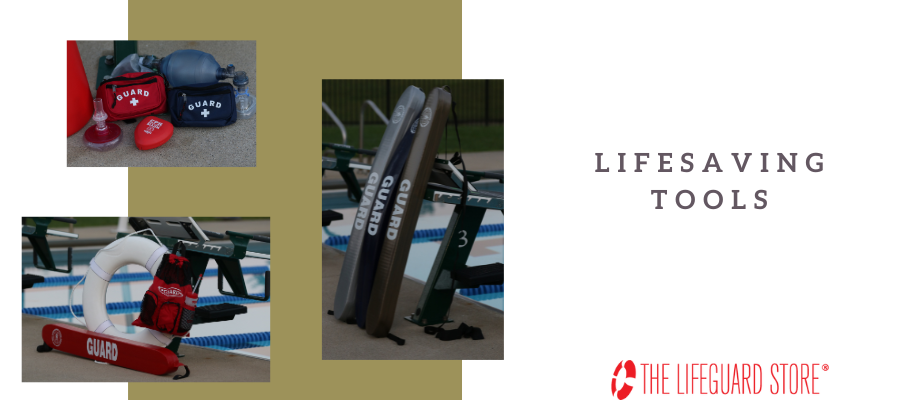
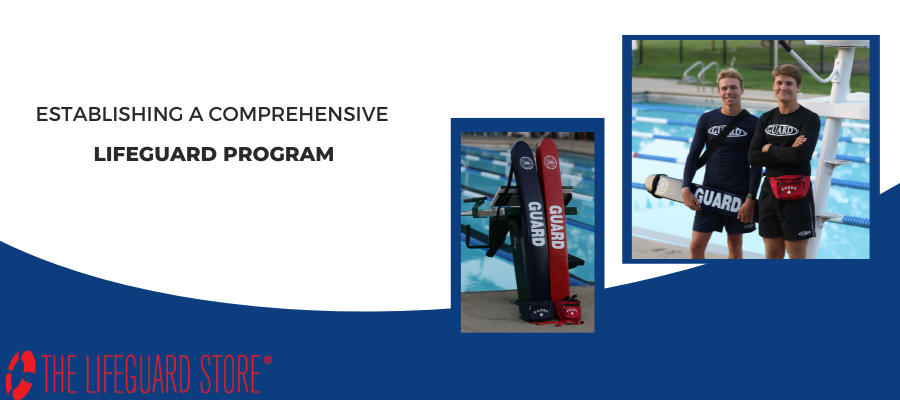
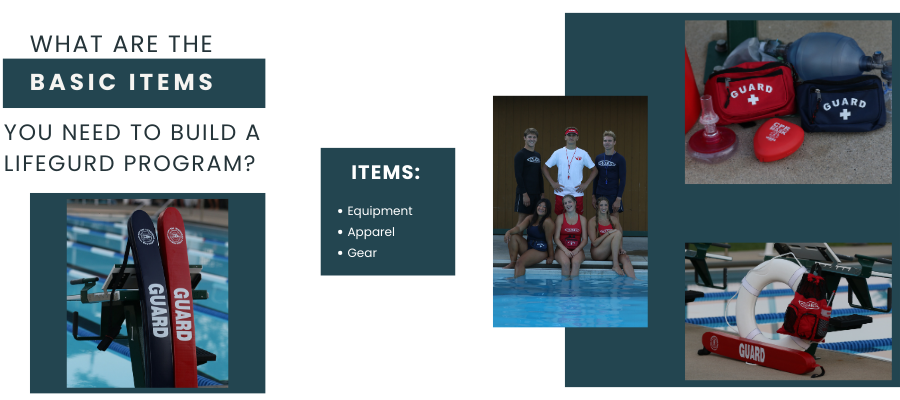
Leave a Comment
Your email address will not be published. Required fields are marked *